Recipe Overview
Why you’ll love it: This soup recipe is easy, convenient, and so satisfying.
How long it takes: 15 minutes to prep, 4 hours on HIgh or 7 hours on Low
Equipment you’ll need: slow cooker (crockpot)
Servings: 10
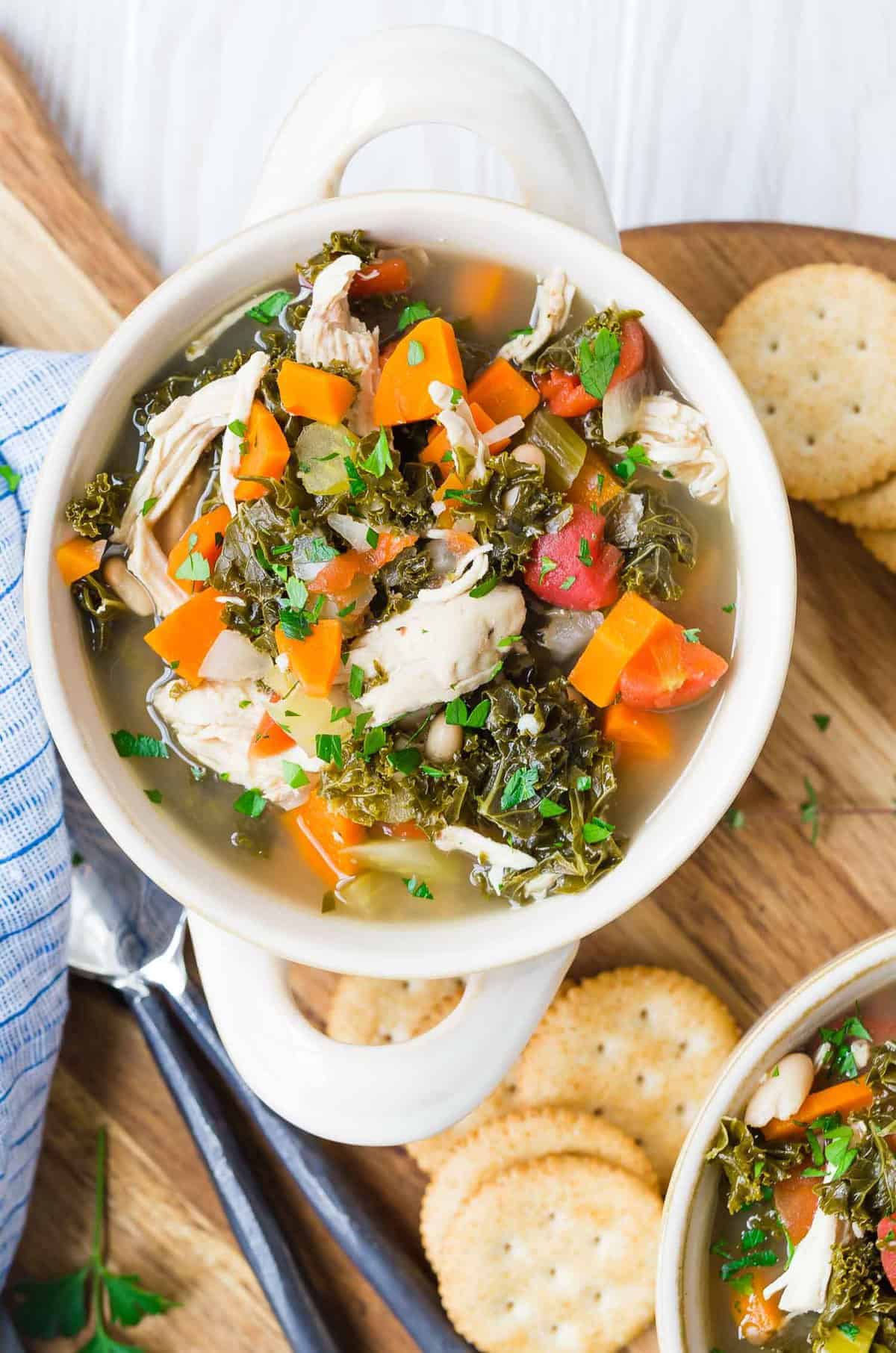
Hearty Slow Cooker Chicken Soup
Lots of colorful vegetables. This slow cooker chicken kale soup is packed with hearty vegetables like kale, carrots, onions, celery, and tomatoes. And because it’s so delicious, you’ll find yourself rejoicing in how easy it is to eat all those vegetables.
Easy to make. Crockpot chicken kale soup is a snap to make. Simply put everything in the slow cooker, turn it on, and forget about it. It’ll be ready when dinner time rolls around.
Round out the meal. This kale and chicken soup is delicious with warm bread or muffins. Try healthy whole wheat cornbread. We love to sprinkle homemade croutons on the soup.
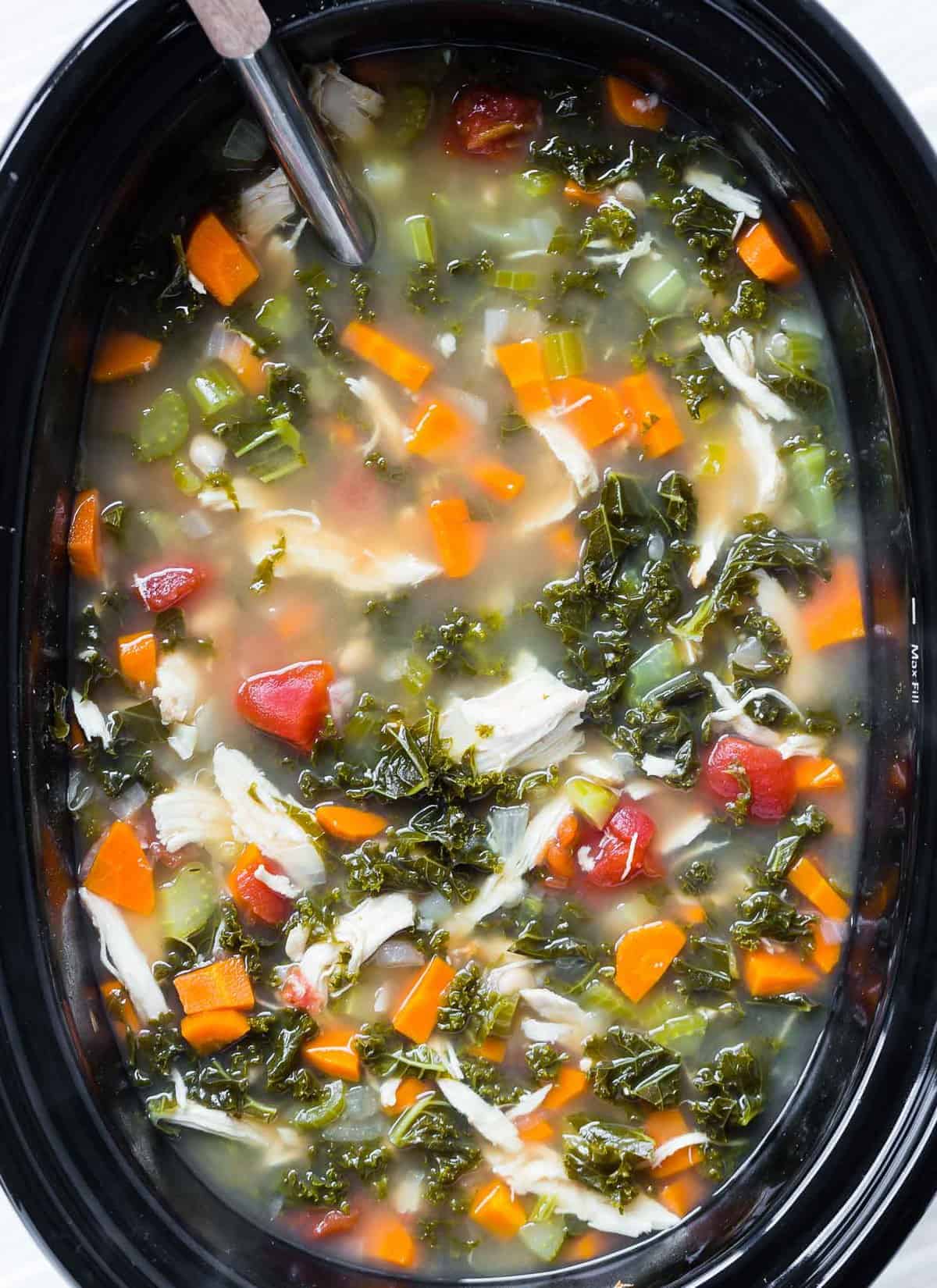
How To Make This Chicken Soup Recipe
Pile everything into your slow cooker and let it work its magic! Shortly before serving the soup, remove the chicken breasts to a plate, cool slightly and shred the meat. Put it back into the slow cooker and mix it in. Add a splash of red wine vinegar for a touch of acidity to brighten the flavor.
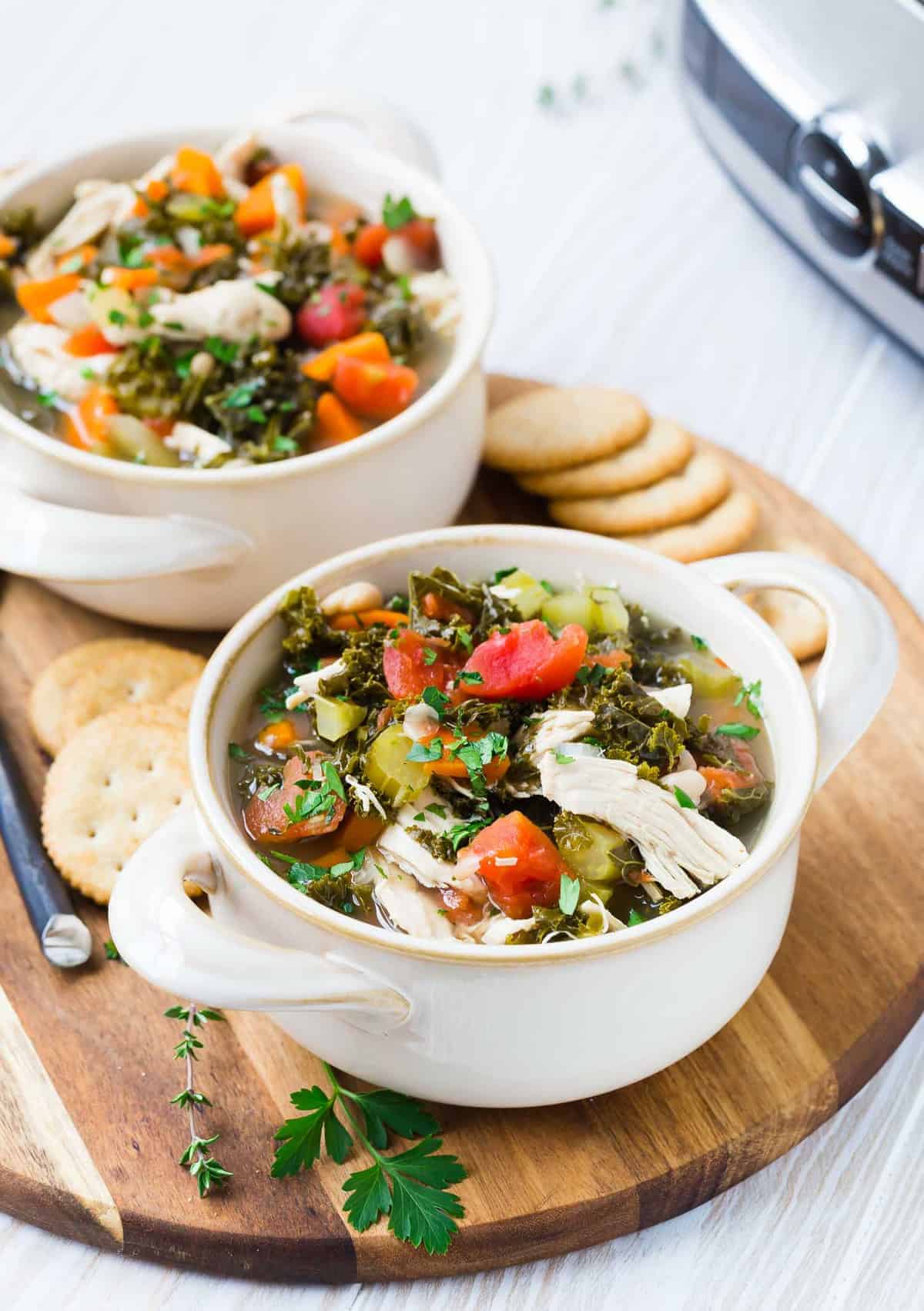
Ingredient Notes
- Boneless skinless chicken breasts (use thighs if you prefer)
- Kale – lots of it, 6 cups! So good for you.
- Carrots, celery, onion, garlic – These aromatics add lots of great flavor.
- Canned cannellini beans – or any other white beans
- Canned diced tomatoes – use fresh tomatoes if you prefer.
- Chicken broth – look for unsalted or low sodium broth to keep the sodium content low.
- Bay leaf, dried thyme, salt and pepper – simple seasonings from your pantry
- Red wine vinegar – just a dash of vinegar adds surprising depth to the broth. Lemon juice works too.
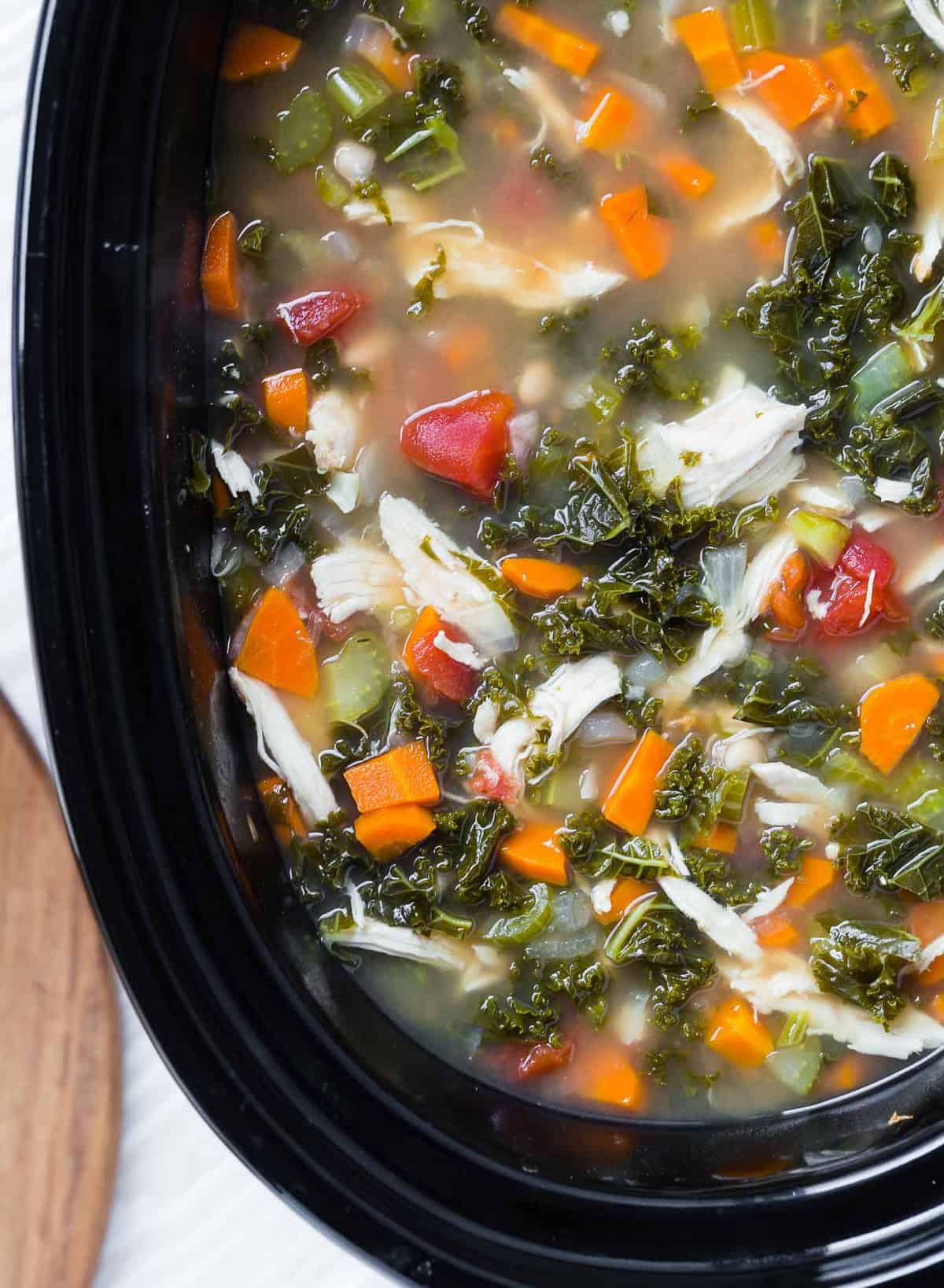
More Flavorful Chicken Soup
Maybe you’re wondering how to make your chicken soup taste richer and more flavorful, more like a restaurant soup. I find that dark meat is a bit more flavorful and richer. Add lots of seasoning like garlic, onion, and herbs. Use good quality stock or broth. Adding a bit of acidity at the end of the cooking really punches up the flavor too. Try adding red wine vinegar or lemon juice.
Recipe Variations
- Vegetarian: Omit the chicken. There’s plenty of protein in this soup without it. Add a second can of beans if you want. Serve it with a sprinkling of cheese.
- Keto/Whole 30: Omit the beans.
- Sweet potato is a tasty alternative to carrots. Peel a sweet potato and dice it.
- Not in the mood for soup? Try my crockpot chicken and rice with vegetables.
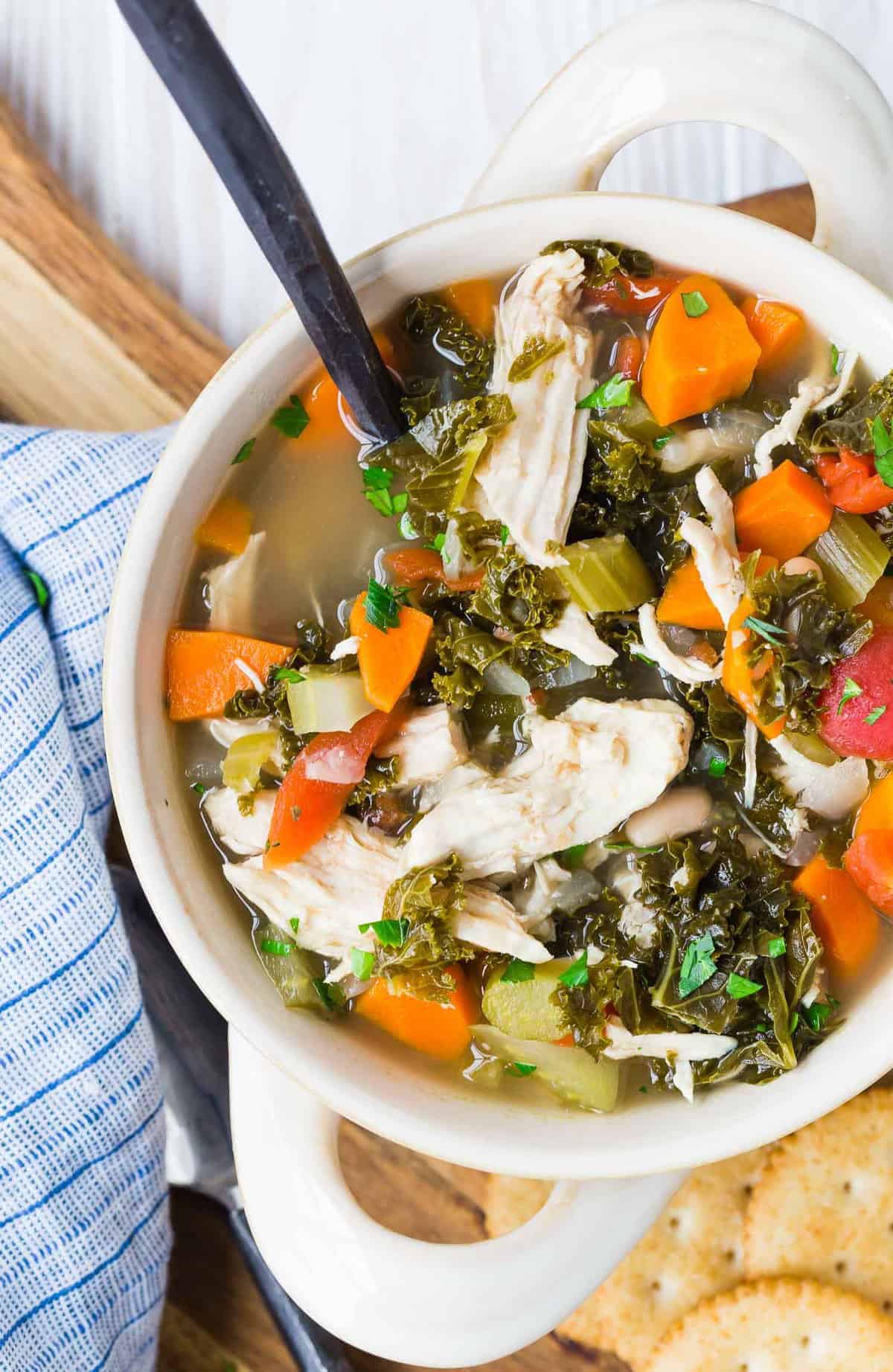
Refrigerate: This chicken kale soup recipe makes a big batch, about ten servings. The good news is that it’s great reheated the next day, either in the microwave or on the stovetop. Healthy chicken kale soup soup makes a wonderful lunch!
Freeze: It can be frozen for up to month, too. For best results, thaw it overnight in the fridge and reheat gently.
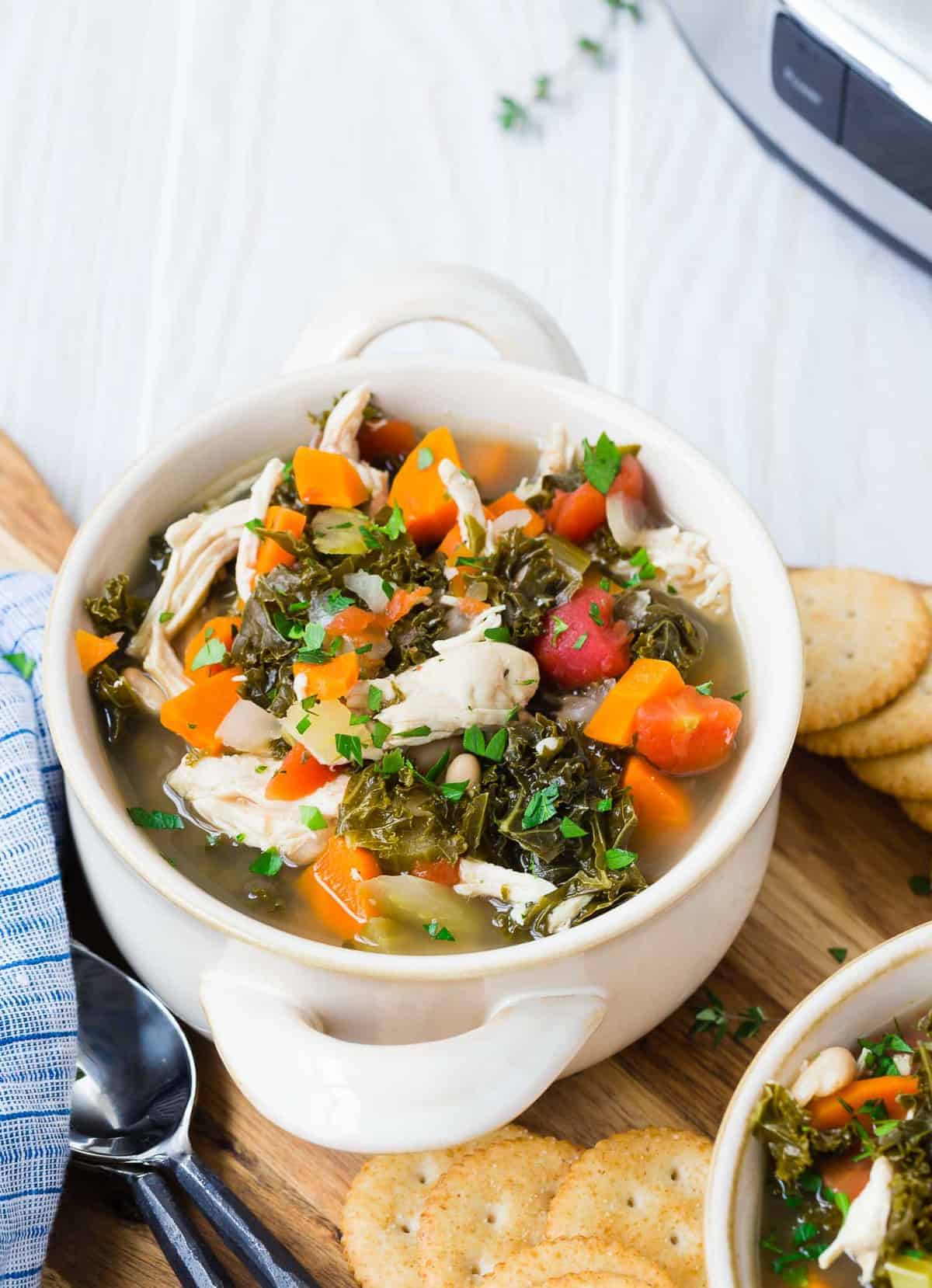
Vegetable Soup Recipes
Soup is a perfect way to eat a bunch of veggies all at once. Try one of these vegetable-loaded soup recipes:
- Vegetable Soup (7 vegetables in this one!)
- Instant Pot Minestrone Soup or Crockpot Minestrone Soup With Quinoa
- Chicken Tortilla Soup
- Turkey Quinoa Chili (under 400 calories!)
- Ground Turkey Soup with Beans and Spinach (20 minutes!)
- Easy Hamburger Soup Recipe
- Chicken Corn Chowder
For more soups that include kale, try Zuppa Toscana, Italian Sausage Stew with White Beans and Kale or Chicken Barley Soup with Kale and Butternut Squash.
Looking for more kale recipes? Check out my list of 20 amazing kale recipes.
Crockpot Soup Recipes
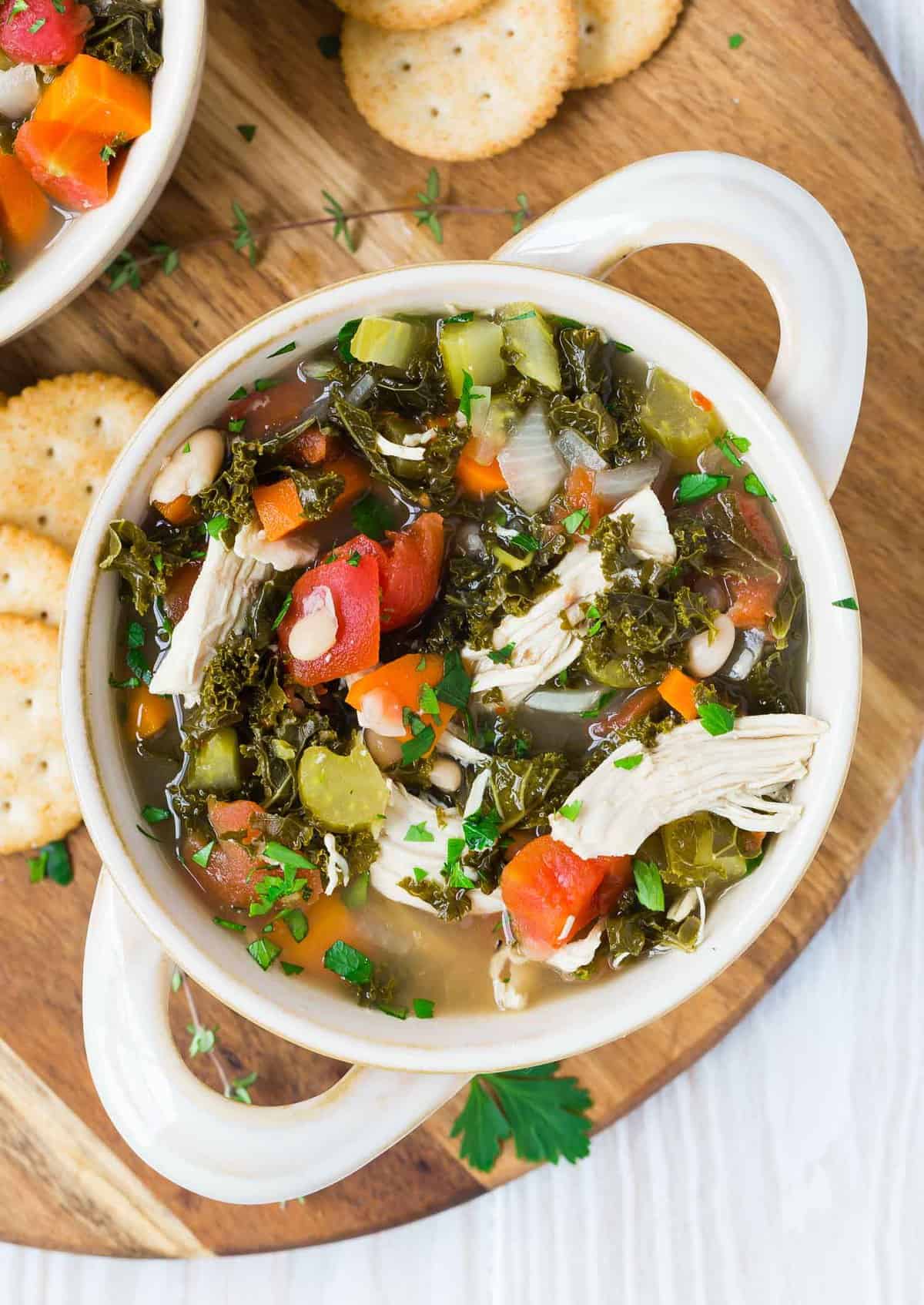
Slow Cooker Chicken Kale Soup
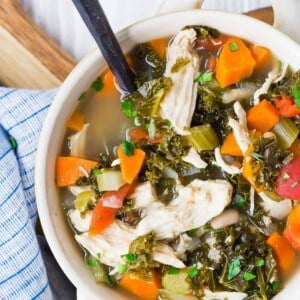
Ingredients
- 1 ½ lbs. boneless skinless chicken breasts (see note)
- 6 cups lightly packed, roughly chopped kale (about 1 bunch)
- 2 cups sliced or diced carrots (3 medium carrots)
- 1 ½ cups sliced or diced celery (3 stalks)
- 1 cup chopped onion (1 medium onion)
- 2 cloves garlic, pressed or minced (about 1 teaspoon)
- 2 cans (15.8 oz.) cannellini beans, undrained (see note)
- 1 can (14.5 oz.) diced tomatoes, undrained (preferably no-salt added)
- 1 ¾ teaspoons coarse salt
- ¼ teaspoon red pepper flakes, or to taste (or coarsely ground black pepper)
- 1 bay leaf
- ¼ teaspoon dried thyme
- 4 cups low-sodium chicken broth
- 2 cups water
- 1 tablespoon red wine vinegar, or to taste
Instructions
- Add all ingredients, except red wine vinegar, to 6-quart slow cooker, making sure chicken is submerged in liquid.1 ½ lbs. boneless skinless chicken breasts, 6 cups lightly packed, roughly chopped kale, 2 cups sliced or diced carrots, 1 ½ cups sliced or diced celery, 1 cup chopped onion, 2 cloves garlic, pressed or minced, 2 cans (15.8 oz.) cannellini beans, undrained, 1 can (14.5 oz.) diced tomatoes, undrained, 1 ¾ teaspoons coarse salt, ¼ teaspoon red pepper flakes, or to taste, 1 bay leaf, ¼ teaspoon dried thyme, 4 cups low-sodium chicken broth, 2 cups water
- Cover and cook on high for 4 hours, or low for 7 to 8 hours.
- Remove chicken to plate, cool slightly, and shred with two forks. Return shredded chicken to crockpot.
- Add red wine vinegar, stir well, and taste. Add more vinegar, salt, and pepper if needed.1 tablespoon red wine vinegar, or to taste
Notes
- Prefer dark meat? Boneless skinless chicken thighs may be substituted if you prefer dark meat.
- Canned bean alternatives: Use any white bean, such as cannellini, great Northern, or navy beans. If you prefer, rinse and drain the beans before adding them to the soup.
- Storage: Leftover soup can be refrigerated up to 5 days or frozen up to one month. Thaw overnight before reheating.
Nutrition
Nutrition information is automatically calculated, so should only be used as an approximation.
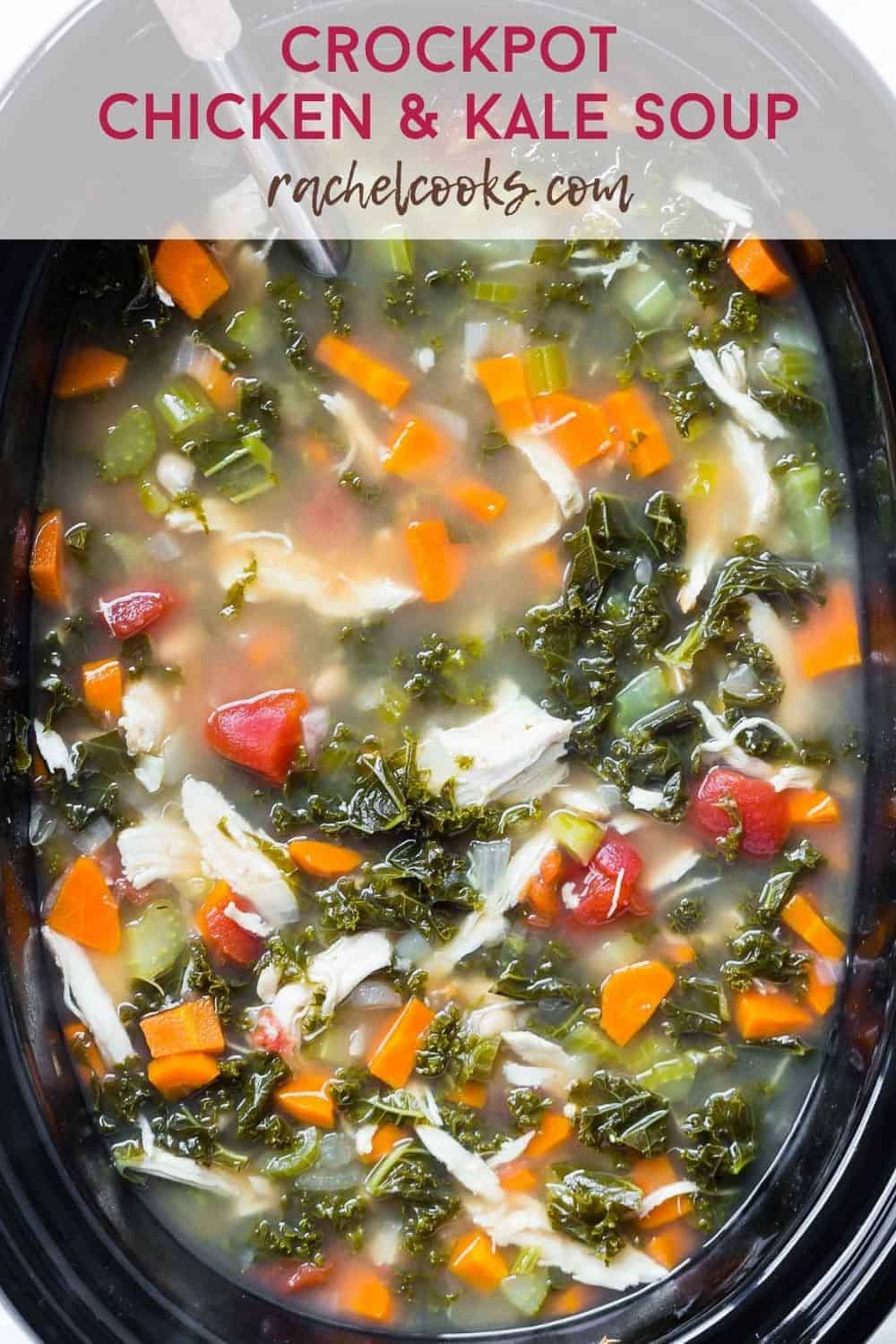

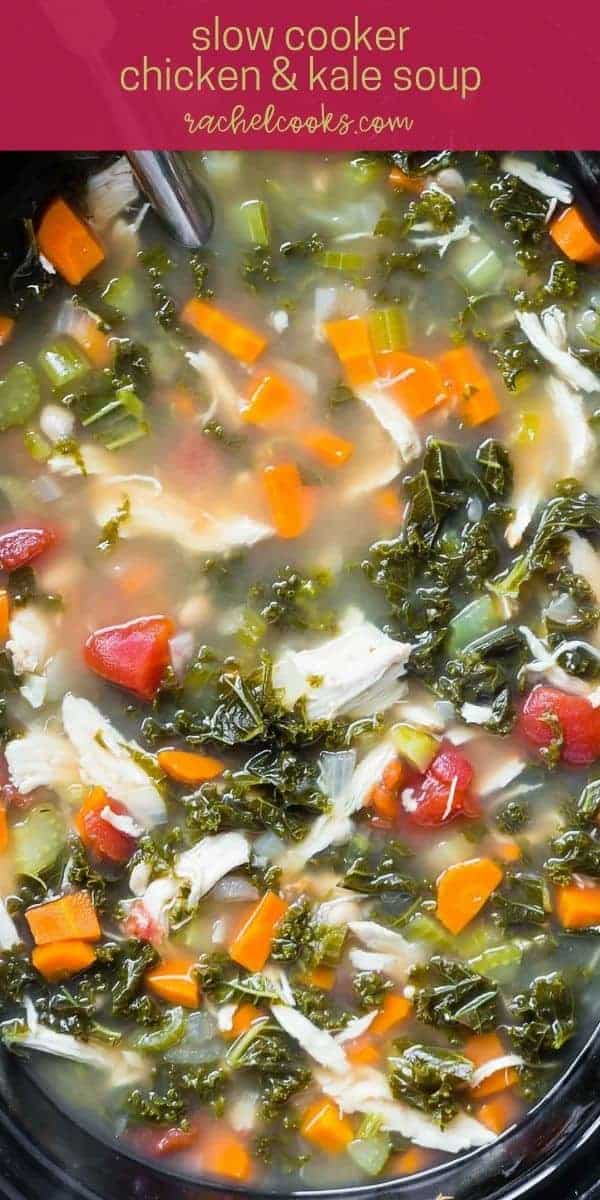
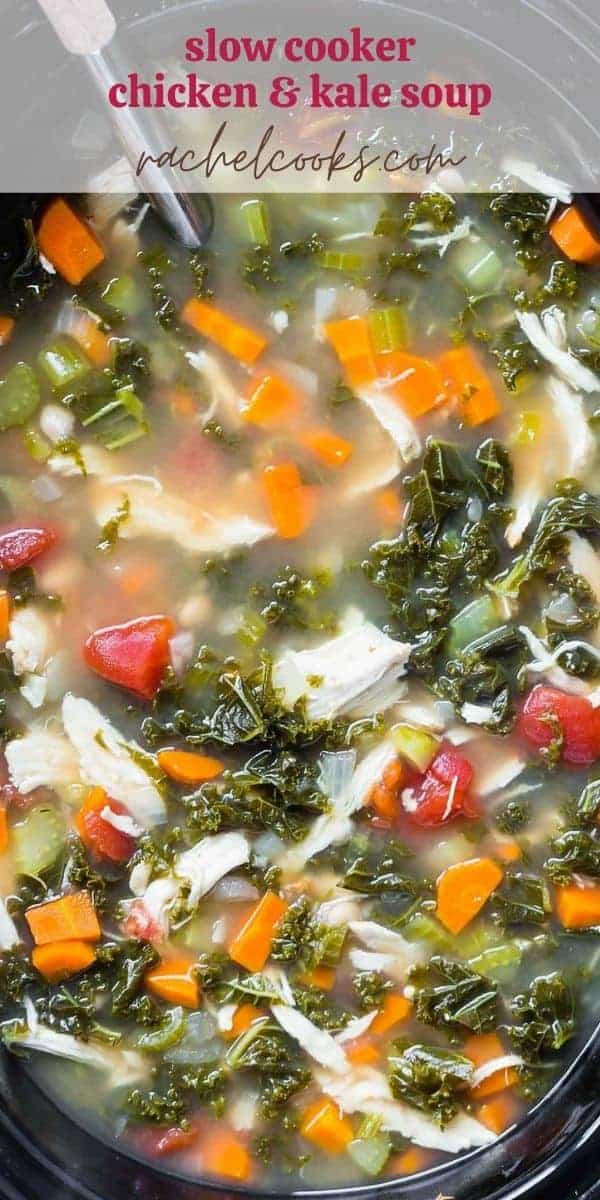

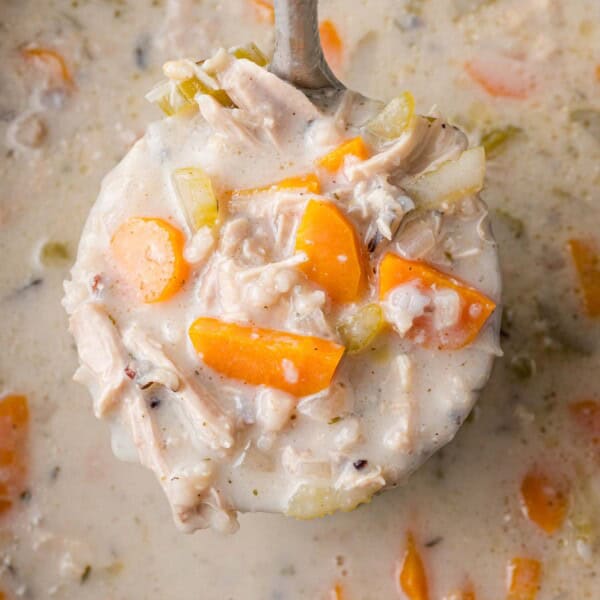
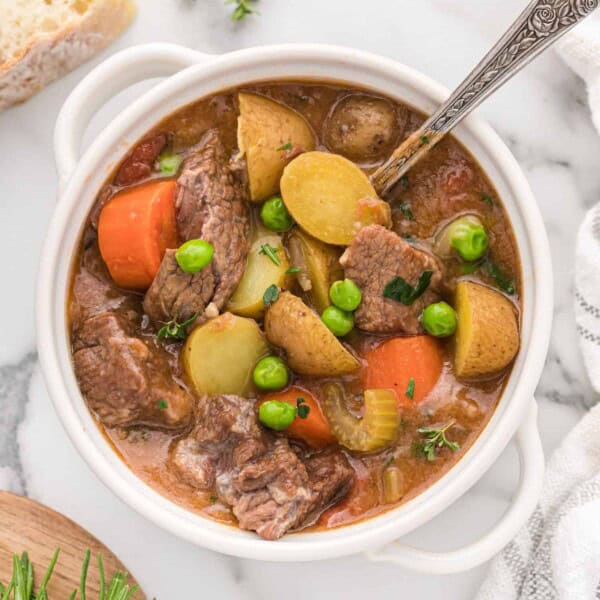
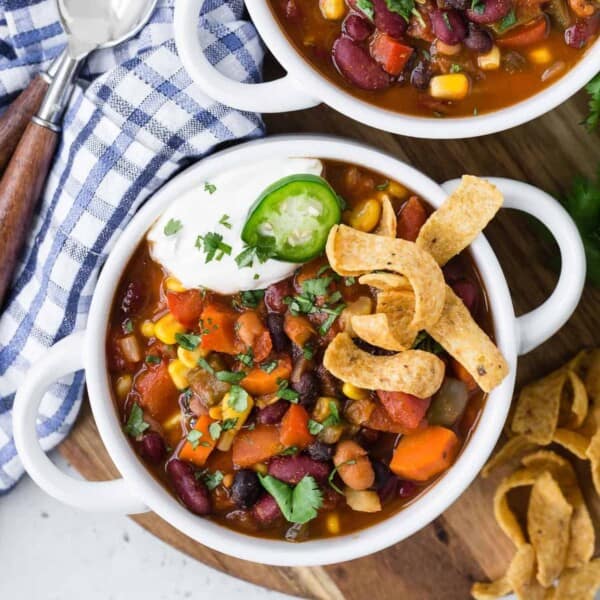
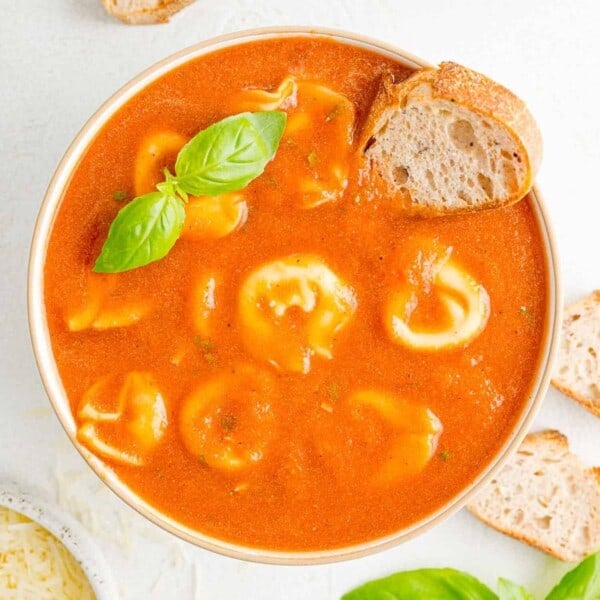
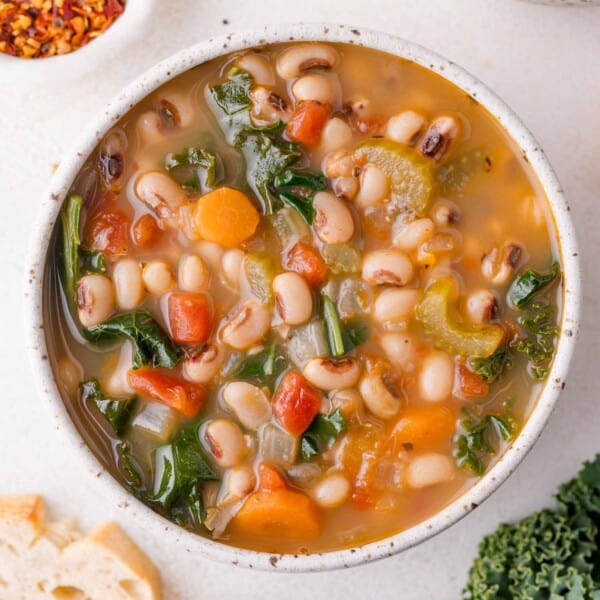
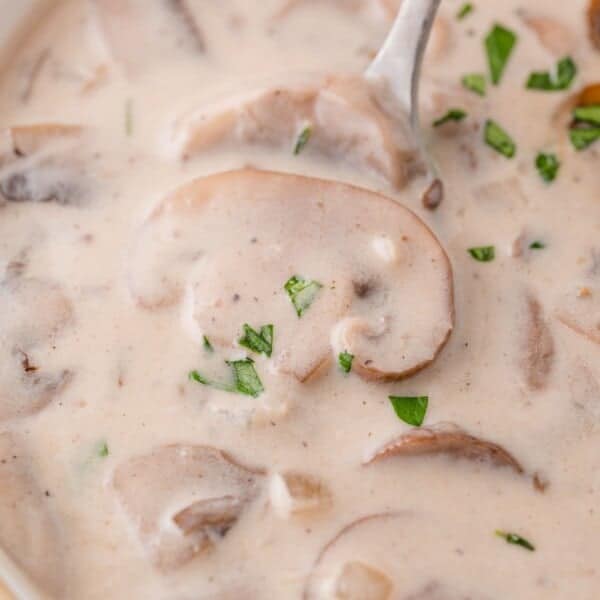
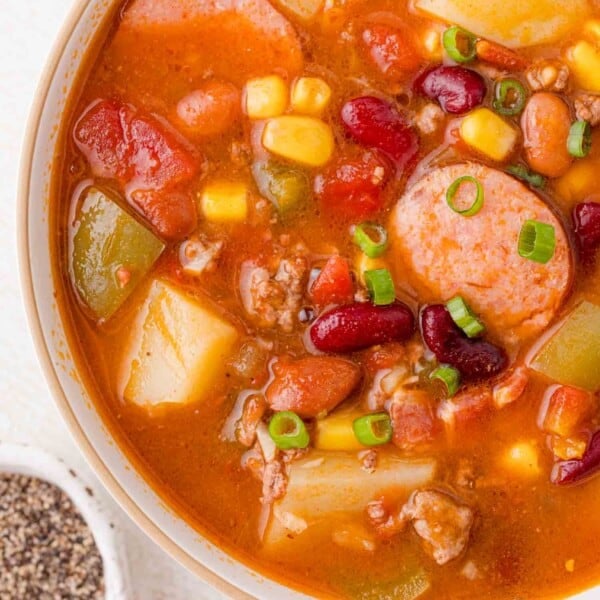
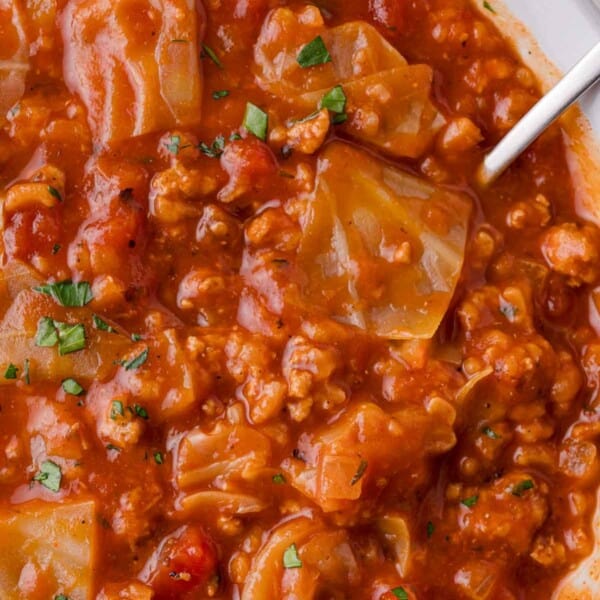









This is a great hearty nutritious soup. I have one question, for the beans it calls for two cans 15.8 oz, is it 15.8 per can or 15.8 total? I know I can adjust how I like but needing to know for nutrition info stated and dietary tracking purposes.
Thanks!
15.8 oz per can.